History of the Kurita Collection and Museum
The Kurita Museum Ashikaga Hall was opened in 1975.
The Kurita Museum has been approved by the Japanese Government and opened to the public under administration of the Japanese Museum Law.@It is my belief that every cultural property should belong to the people and absolutely must not be monopolised by any private
individual.
The Museum is located in Ashikaga City , my native town. It is also famous as the place of eAshikaga Gakko'
(Asikaga School). In this elegant and historical town, I selected a picturesque place for the site, on an area of nearly 24 acres , and built the Museum Hall surrounded by a landscaped garden, constructed without destroying the natural beauty.
Since the opening of the Museum , the devotees of pottery and porcelain who have visited from many countries , have evaluated and appreciated it as a museum of marked individuality and the essence of real art.
A great feature of the Museum is that it is the first to exhibit only pottery and porcelain produced in Japan.
The Museum only exhibits Imari and Nabeshima wares.
Imari ware was collected by not only nobles , warriors ,wealthy merchants and common people in Japan in the Edo period ( A.D.1603-1867 ) , but also by people in Asia and Europe. Nabeshima ware are products made in the kilns founded by the Prince Nabashima. All these wares have been collected by myself and displayed in stands designed by myself. In other words , it can be said that the Museum as a whole is a symbol of my love of the Imari and Nabeshima wares.
The Imari ware is brilliantly designed with perfect beauty and no trace of artifice and yet has great dignity. The Nabeshima ware , on the other hand , is noble, elegant, profound and has eternal beauty. They appear very fresh as if they have just come out of kilns with a graceful surface even though they are 300 years old. Such fascinating aspects of them as originality of
design, refinement of colour, and regality as of a King or a Qween, have caused me to devote all my time and energy to collecting these two wares. It is more than 50 years since I started collecting Imari and Nabeshima wares, during which time I have kept my belief that the collection of these must be a contribution to the culture of the world , and in this strong belief I have
been able to overcome the many difficulties I encountered. Thus , the collections have been gradually increased and become abundant enough to let the people fully enjoy the art of the Imari and Nabeshima wares. I am very proud of the Museum in which all the eternally beautiful masterpieces are exhibited. I will be very pleased if the Museum , which is founded upon my passionate enthusiasm , should be useuful to lovers of pottery and porcelain , should contribute to their understanding of a keen appreciation of the art and of the peaceful mind of the Japanese people who created such articles, and should deepen their affection for the Imari and Nabeshima wares.
Hideo Kurita
Founder
Kurtia Museum
Information
Closed :
Mondays, (the day following national holidays) 28 Dec. to 2 Jan.
Hours :
9:30 a.m. - 5:00 p.m.
Entrance Fee :
Adults and University Students : 1,250 yen
School Children : 500 yen
Party Reduction ( up to 20 persons ) : 20%
Directions :
TOBU Line : Take the TOBU Isesaki-line,and get off at Ashikaga]shi station.
Then take a taxi (about 15 minutes from the station).
JR Line : Take the JR Ryomo-line, and get off at Tomita station.
(about 10 minutes walk from the station.)
By Car : From the Hakozaki Interchange (the Metropolis Freeway) to the Sano Interchange
(the Tohoku Freeway) : about 60 minutes
From the Sano Interchange to the Kurita Museum : about 15 minutes
Parking is available.
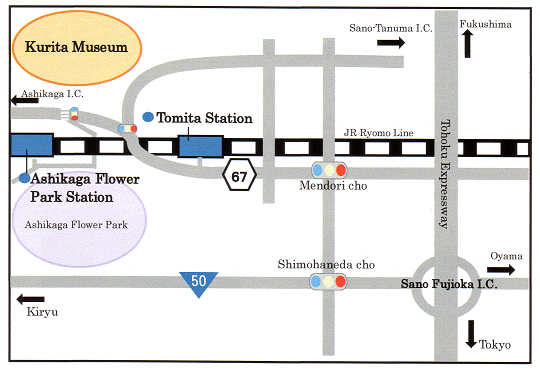
KURITA MUSEUM
1542, Komaba]cho, Ashikaga]shi, Tochigi]ken
Tel. 0284-91-1026
 Main Museum Building Main Museum Building

 History Hall History Hall
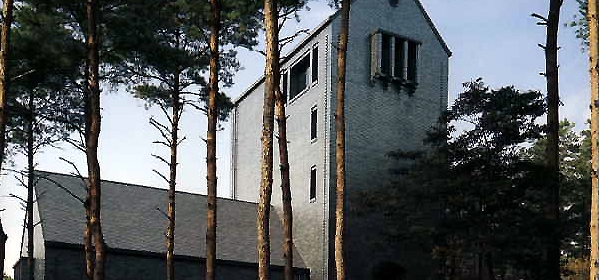
 Kurita Villa Kurita Villa
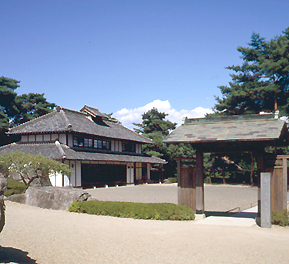
 Holland Hall and Shop Holland Hall and Shop
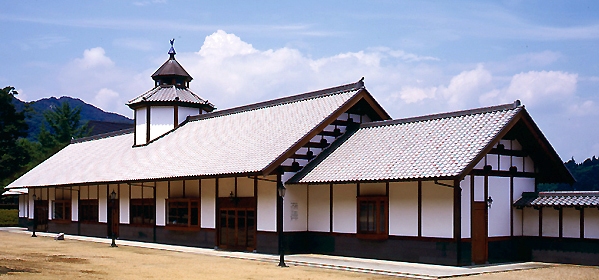
 Ceramic Hall Ceramic Hall
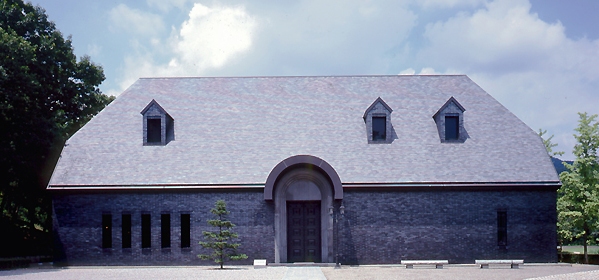
|

